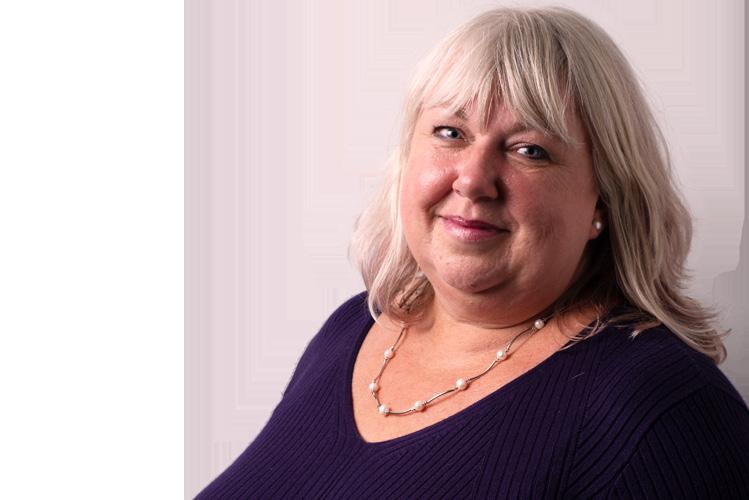
9 minute read
SKY
Sky support for SMEs
Sky announces SME100, a £1 million AdSmart SME Support Scheme, a fund open to eligible UK businesses to help SMEs survive and thrive in difficult times
The £1 million fund will provide 100 businesses with TV advertising campaigns via AdSmart to support them during these difficult times.
SME100 is open to SMEs that have been running for at least one year in the UK with up to 50 full-time employees. A business can nominate itself or be put forward by its own customers.
Sky Media is encouraging people to highlight the businesses in their local area that need support during this time and which would benefit from accessing the power of TV advertising at a moment when TV consumption has significantly increased.
Sky Media wants to reward the businesses that are demonstrating true resolve and ingenuity. Businesses of all types are adapting to the current climate but can further thrive with the extra exposure TV can deliver. From local garden centres delivering flowers and materials for the first time, to yoga and dance studios keeping people fit with new online classes, the businesses that are selected to be part of the SME100 will be representative of the whole of the UK.
“Businesses up and down the country are facing some of the hardest trading conditions in recent memory,” said David Sanderson, Director of AdSmart Local & Development at Sky Media.
“We want to help our nation’s SMEs where possible by giving access to highly relevant audiences via AdSmart totally for free. SMEs are the lifeblood of our economy, making up 99.9% of all business in the UK.
“We know that although there are economic slowdowns, people are still spending money and we want to help brands connect to these audiences. This initiative is about giving businesses confidence in advertising and their ability to succeed, no matter what the situation.”
Creative execution of the ads will be supported by local creative agencies and through an exclusive partnership with Shutterstock.
Shutterstock will assist the 100 businesses by providing complimentary access to high-quality images, video and music to aid the creative process and effectively tell their story with engaging content. In doing so, the SME100 and Shutterstock will enable local creative agencies to produce broadcast-ready, 30 second ads remotely and cost-effectively and will bring further investment into local and smaller creative industries.
The campaigns will be delivered via AdSmart from Sky, the market leading addressable TV platform, that easily enables brands to advertise on TV by focusing on the audiences that matter to them. This revolutionary technology means a brand can reach households by postcode area, within a designated distance of their store, or by household make-up or lifestyle attributes that best suit their service.

In only targeting audiences that matter to the business, brands can be assured that their advertising will be relevant, accessible and drive business results.
Small Business Minister, Paul Scully said “This Government is fully committed to supporting SMEs through this challenging time, with £12.3 billion in grants and 100% government guaranteed loans of up to £50,000 through our Bounce Back Loans scheme. How

ever, we all have a role to play in the national response to COVID-19, so I welcome Sky’s announcement today, releasing a £1 million AdSmart fund to provide SMEs with free TV advertising campaigns.”
AdSmart has transformed advertising for smaller and niche businesses. Previously TV was perceived to be too broad and expensive, but the award-winning targeting capabilities of AdSmart changes this.
Since launching in 2014, it has been used by 2,380 brands for more than 28,000 campaigns to provide engaging, brand safe and relevant TV campaigns. With 75% of the brands using the technology totally new to TV, it’s allowing businesses to utilise the brand-safe and trusted power of TV for the first. In Sky Media’s recent research report, ‘AdSmart: Five Years & Forward’ it was revealed that addressable TV campaigns increase purchase intent by 7% overall, and as much as 20% for new to TV advertisers who benefit from the exposure and credibility TV delivers.
Qualifying conditions: • Businesses must have between 2 and 50 full time employees • Businesses cannot replace money already booked/contracted with Sky Media • Businesses need to be new to TV or haven’t been on air in 12 months • Businesses must be prepared to produce a TV ad with assistance from Sky, locally approved agencies and Shutterstock content.
The offer: • Sky Media will gift a campaign value of £10k comprised of TV advertising using Adsmart that uses geo-demographic targeting across the 100+ AdSmart enabled channels • The maximum length of the TV advert is 30 seconds • The campaigns must be completed by July 31st • Sky Media will assist where required to provide the TVC. However, it may encourage businesses to use third party tools and service to complete its advert. • Shutterstock will offer 100 businesses with complimentary access to content for use in the 30 second AdSmart TV ad only. Businesses can choose from Shutterstock’s collection of more than 330 million images, 18 million video clips and thousands of music tracks.

The Fear of Phones
Almost two thirds (63%) of UK adults have experienced phone fear – feeling reluctant or nervous about making or receiving a routine phone call – with almost one in five (19%) stating they feel it “all of the time”, according to research from cloud telephony specialist, Natterbox.
With many people now working from home or self-isolating and relying on the phone for communication, occupational psychologist Maria Paviour, Director at Wellbeing with CARI, has identified several key strategies for coping with phone fear, which are outlined at the end of this article.
40% of Britons surveyed in January 2020 agree that, in normal circumstances, they would only make a phone call as a last resort, while over a quarter (26%) say they would only ever make a call in the case of an emergency. The research also indicates that phone fear is increasing in the UK, with one third (33%) of respondents agreeing they feel it more than they used to.
Generation Mute
Natterbox’s research shows that young people (16-24) are most likely to encounter phone fear, with 35% experiencing it all the time and 47% some of the time.
According to Professor Graham Davey, Professor of Psychology at the University of Sussex: “This is a vital age for learning how to interact, yet many young people will avoid certain interactions as they are frightened of learning new skills or making themselves look stupid, inferior or unintelligent. We see a number of social phobias start to develop in early teens and adolescence.” The research also found that respondents above the age of 65 were least likely to suffer from phone fear.

Causes of Phone Fear
According to survey respondents who experience phone fear, the most common reason is the worry of forgetting what to say or “freezing” (32%), closely followed by concern around understanding the person on the line, or not being understood (30%).
Prof. Davey comments: “For some people, the inability to see someone’s face when speaking on the phone can

make for a difficult interaction. You can’t judge your interlocutors’ intentions because you can’t see their facial expressions or body language. On the phone, you also deal with an interaction in real-time, which comes with the risk of making a faux pas – another common worry for many people.”
According to occupational psychologist, Maria Paviour, Director at Wellbeing with CARI: “Many individuals who have had phone fear at some point in their lives also report that they can’t express themselves over the phone as well as they can when in a face-to-face situation or writing things down. With hypo-arousal, cognitive functions slow – because the brain is shutting down. This can be observed in the effect of the neural connection to the larynx ceasing to function properly, resulting in the voice box not working and words being unable to ‘come out’.”
Neil Hammerton, CEO at Natterbox says: “Despite having heard of ‘phone fear’, we didn’t know much about it, or the extent to which people experience

it. That’s why we have commissioned our own research into the issue. “As a business built on phone conversations, we’ve always closely monitored what does and doesn’t make a successful call. Our aim being to build technology that makes phone calls easier for everyone. We were shocked to find that so many people across the country experience phone fear and as a result, we’re even more committed to ensuring that the organisations we work with have the tools in place to make speaking on the phone easy, convenient and more comfortable for both their employees and customers.”
Maria Paviour’s five top tips for overcoming phone fear
• Take a moment to do a small risk assessment. Clarify the true risk and impact of the phone call going wrong, and how much you could afford to take the impact. In reality, the rational impacts of making a phone call are not nearly as damning as we overthink them to be. • If you are experiencing butterflies in your stomach, tingling fingers, or feel a bit shaky, this is your body preparing to deal with a challenge. It’s a competency which you can actively harness to feel ‘positively energised’. The best way to do this is, if possible, to have a face-to-face chat with someone with whom you feel comfortable, for example a friend or colleague. This increases your oxytocin and will help to change your experience of stress to one of courage! • Remember that all the resources you need to make or receive a phone call are already in your possession. You know that you can speak and listen. Taking a little longer to allow your brain to respond without angst will make the experience better for both yourself and the person on the other end of the phone. • Be kind to yourself. Giving yourself a hard-time or adding self-criticism will not help to solve the problem. • For businesses/managers: Avoid the temptation to present targets and deadlines, especially to new employees who are anxious about using the phone, as this creates unnecessary pressure, increasing the risk of hypo-arousal and the brain shutting down. It’s better to empower people to learn and build confidence at their own pace to start with, and gradually start to introduce targets for their phone use as they grow into the role.









